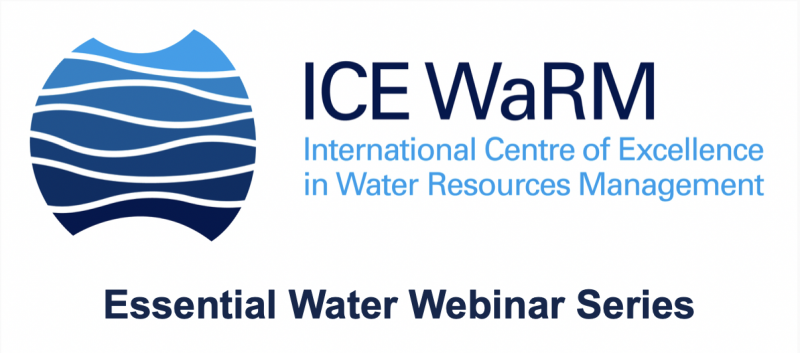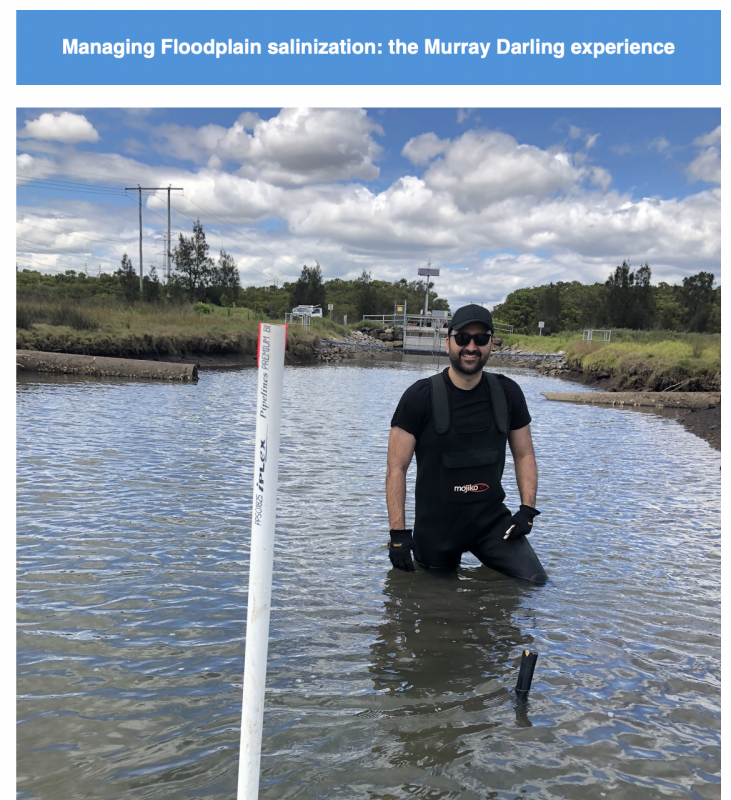Essential Water Webinar Series
Published on by Water Network Research, Official research team of The Water Network in Case Studies
The Essential Water webinar series seeks to introduce people to water management. It is designed for a broad audience, including those involved in water policy or management but without technical expertise, those who wish to expand their knowledge to areas outside their expertise, young water professionals and members of the community wishing to understand water policy and decision making.
Managing Floodplain salinization: the Murray Darling experience


Our presenter, Dr Alaghmand on Koorgang Island on a data collection field trip to investigate the interaction between the creek and the adjacent saline floodplain.
Wednesday 15 December 2021 at 2:30pm to 3:30pm AEDT
(Australian Eastern Daylight Time)
The Murray River is Australia's longest river at 2,508 km (1,558 mi), forming Australia's most important irrigated region. But in South Australia, it has become degraded through river regulation by a series of locks (small dams) and intensive irrigation activities. These have decreased the natural flood frequency and increased rates of floodplain salinization.
Concerns have been raised about the quality of water extracted from the Murray River for industrial, agricultural, and potable uses, including metropolitan Adelaide's water supply. This was highlighted as the most significant hydrological risk by the Murray Darling Basin Authority (MDBA) during the Millennium Drought.
Therefore, a comprehensive understanding of flow and solute dynamics within the river and floodplain environment was essential. To this end, a complex and powerful fully-integrated numerical model was developed for a study site at Clark's Floodplain. The model was calibrated against the wide range of observed data to capture the nature of surface-groundwater interactions in the semi-arid environment. Then, a systematic approach was undertaken to assess different salinity management options, including lowering the groundwater table using a series of pumps, injection of freshwater to the saline floodplain aquifer, artificial flooding, and river stage manipulation. In this talk, the main lessons of the project are presented.
Information
- Website: https://mailchi.mp/ewater.org.au/ice-warm-essential-water-webinar-1982262?e=303bfd8da4
- Starts , ends
Taxonomy
- Flood Management
- Groundwater Salinisation
- Flood
- Floodplain Management